The traditional Jeep has a short wheelbase. Being short and light weight means that it is easy to take to places that are narrow - and a Jeep is not easily high-centered. Unfortunately the short wheelbase makes the vehicle unstable in high speed off-roading. Even taking on small obstacles can result in a bad driving rhythm. Driving steep slopes either up or down can result in a rollover backwards or forwards.
Lets look at this from the point of Center of Gravity
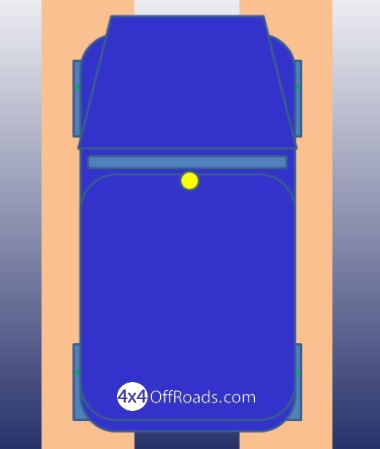
The center of mass of a body may be defined as the average location of the mass distribution.
In physics, the center of mass or barycenter of a body is a point in space where, for the purpose of various calculations, the entire mass of a body may be assumed to be concentrated.
-Wikipedia
For us earthlings the center of gravity is basically the same as the center of mass. For 4x4 owners we are interested in the location of this point in space as it tells us a lot about when our truck is in danger of rolling over.
Roll over angle is the angle between the ground and a line "drawn" from the supporting wheel to the CG (Center of Gravity).
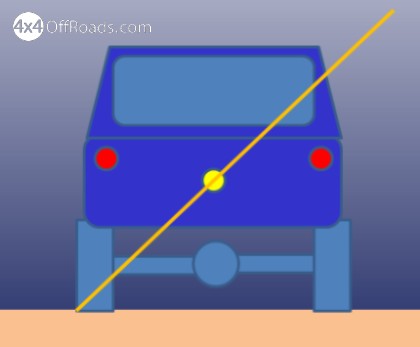
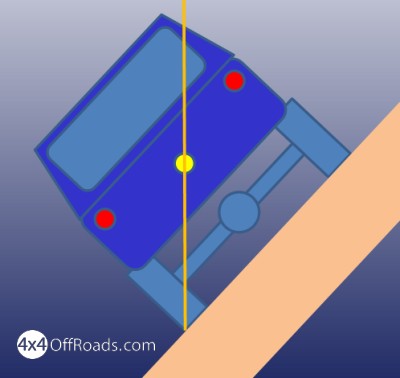
To be more specific the sidways roll-over-angle is the angle between the ground and a line from the outer limits of the wheel track to the CG.
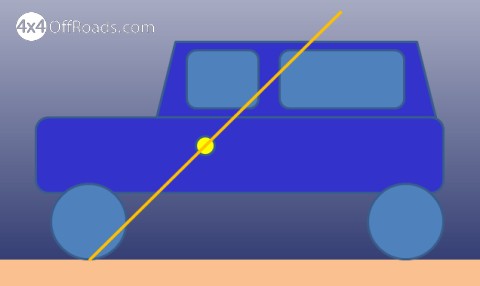
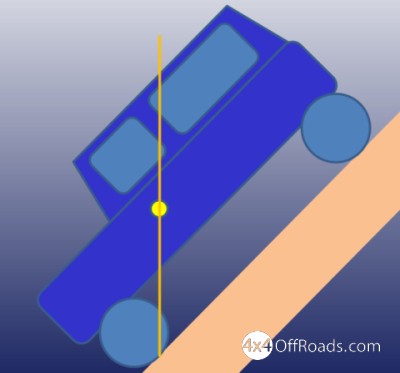
For the front it is the angle between the ground and a line drawn from the touching points of the front wheels tothe CG. Similar for the rear.
As you can imagine the roll over angle is smaller sideways than forward or backward. This is because the wheelbase is (almost) always longer than the track width - making the angle to CG smaller.
In real life situations you may of course roll over sooner. For example if you hit a bump and get thrown over. I you are driving sideways with low air pressure in the tires the tire tread can move upwards (or the 4x4 downhill) in addition the tires carry more weight and therefor compress more.
As the wheelbase gets longer the front and rear roll-over angles improve and as an added benefit the ride will also become better. Although you may have to prevent high-centering by getting larger tires and some lift.
Weight that is in front of the front axle or behind the rear axle is bad for weight distribution. It is called cantilevered weight.
Lets say you add a 50kg tire and wheel on the back of the 4x4. The result is that more than 50kg weight is added to the rear wheels and the front wheels. The exact numbers can be calculated using this formula:
(Add-Weight * Offset) / Wheelbase + Add-Weight
Lets say your trucks wheelbase is 250 cm and you add a 50kg tire at 100 cm behind the rear axle.
(50 * 100) / 250 + 50 = 5000 / 250 + 50 = 20 + 50 = 70kg
In this case the weight added to the rear axle is 20kg or 40% MORE than the added weight!
Similarly the front axle looses 20kg.
The same formula works just fine for inches and lbs.
We want to keep the center of gravity as low as we can. But - keep in mind that this is in conflict with your goal of lifting your truck and installing bigger tires.
A good rule of thumb is to keep the wheels as close to the corners of the vehicle as possible. Another rule of thumb is to keep heavier stuff lower and lighter higher.